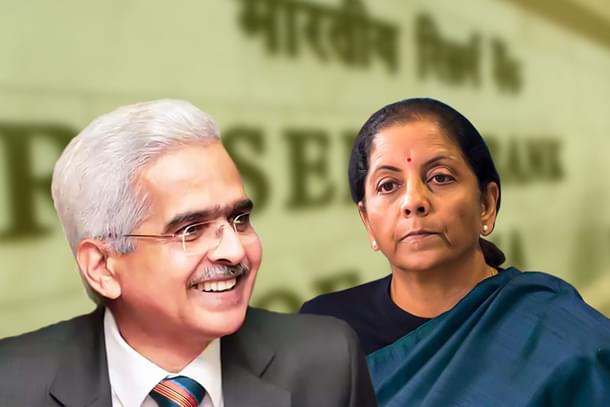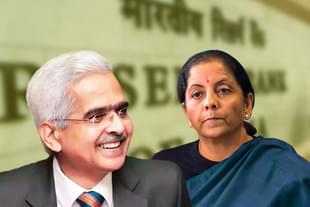Economy
MPC Isn’t Enough: Slowdown Suggests Need For New Forum To Integrate Fiscal And Monetary Policies
R Jagannathan
Nov 20, 2019, 12:13 PM | Updated 12:13 PM IST
Save & read from anywhere!
Bookmark stories for easy access on any device or the Swarajya app.


The sharp divergence between retail and wholesale price inflation (CPI and WPI) in October – the former at 4.62 per cent and the latter at 0.16 per cent – will pose a dilemma for the Monetary Policy Committee (MPC) when it meets in early December to review interest rates.
The rise of retail inflation above the mid-point target set by the government’s mandate to the Reserve Bank of India (RBI) will prompt a pause in rate cuts; but the sharp drop in the Wholesale Prices Index (WPI) to near zero indicates that cutting rates may still be advisable. Even though the MPC is targeting consumer inflation, to ignore the signals from wholesale prices, and related signs of a sharp slowdown in industrial production and consumer demand, would be a mistake.
For sure, the trajectory of growth is not going to change with any further cuts in rates, as even the cuts already announced have not been transmitted fully to borrowers. Rather, what is indicated is the need for a review of the whole idea of a purely inflation-targeting regime in the Indian context.
Retail inflation has been low in the last three years not because of the MPC, but in spite of it. The MPC has been following a mindless rate regime unrelated to the real economy, where it kept real interest rates at 3-4 per cent, thus accentuating the pain felt by both banks and borrowers. Now, with retail inflation back on rising trajectory, it can neither cut rates nor back growth in any meaningful way.
The lesson to learn is simple: the adoption of western models of separating monetary from fiscal policy is not working in the Indian context. In a complex country like India, where large parts of the economy remain informal or over-regulated (food, fuel), or beyond the reach of monetary policy, fiscal policy is more important.
It follows that the most effective economic policy should have both fiscal and monetary components, and this does not happen where six members of the MPC operate in a vacuum with inflation as their sole preoccupation. You can’t beat inflation and keep growth reasonably stable if both fiscal and monetary policies are not informed by discussion and the evolution of a common agenda.
In short, we need a fiscal and monetary policy committee (FMPC), with the fiscal side having some predominance.
One cannot fail to notice how economists have changed their tunes between last year and now. Last year, the concern was about sticking to the fiscal roadmap and the government’s resort to off-balance-sheet borrowings that don’t show up in the official deficit figures. Nowadays, every economist is saying that the real short-term answer to the current slowdown is fiscal, not monetary. When there is a demand slack, only more spending can help you in the short term.
Even when it comes to rate transmission, the answers lie with the fiscal component of policy. Since most banks are in the public sector, rate transmission will happen only when they can write off bad loans faster and that needs aggressive recapitalisation. But recap policies that are frontloaded impact the fiscal deficit. This problem gets compounded once we reckon with the additional reality that last mile lending has shrunk due to the liquidity crisis in the non-banking financial companies (NBFC) sector.
Even though NBFCs are largely in the private sector, the government does not have the option of letting some of the big ones go under for fear of triggering off a wider systemic crisis. This means banks must take over some of the weaker NBFCs or parts of their portfolios, which again implies larger demands for government capital.
Rate transmission and increased lending are a fiscal issue, and not merely a monetary one.
Two conclusions emerge from this analysis.
One, the MPC can either be disbanded or given a new mandate that includes slightly higher inflation targets and/or additional metrics to monitor beyond CPI inflation. It can also be given a more complex objectives that include growth. When growth falls below a target range, the MPC should be authorised to automatically revise its inflation target.
Two, a better alternative would be to modify the MPC and make it a fiscal-cum-monetary policy committee (FMPC), where the RBI and the government jointly decide the right mix of fiscal and monetary steps based on the emerging challenges. An FMPC would have flagged off the need for quicker fiscal responses to the slowdown at least one year ago, including faster bank recapitalisation, and a quicker cut in interest rates between 2016 and now. This is in contrast to what the MPC finally ended up doing – and that too after the loss of one RBI Governor to government-RBI friction.
India needs frictionless coordination between the fiscal and monetary authorities, not an independence that results in sub-optimal policy responses to emerging crises.
Jagannathan is former Editorial Director, Swarajya. He tweets at @TheJaggi.





